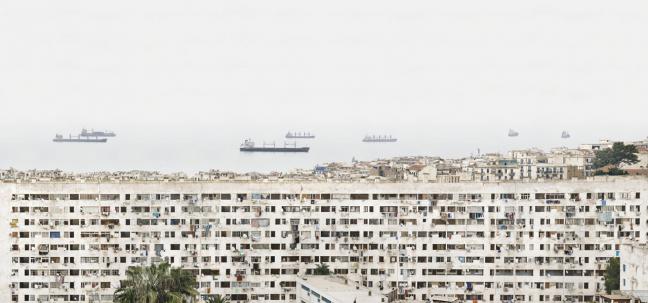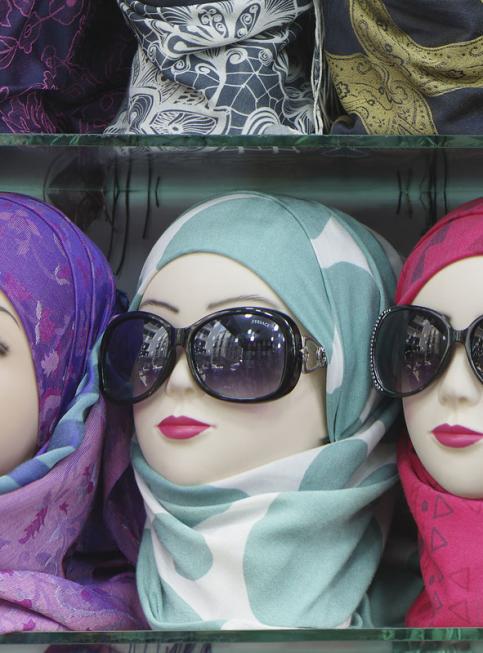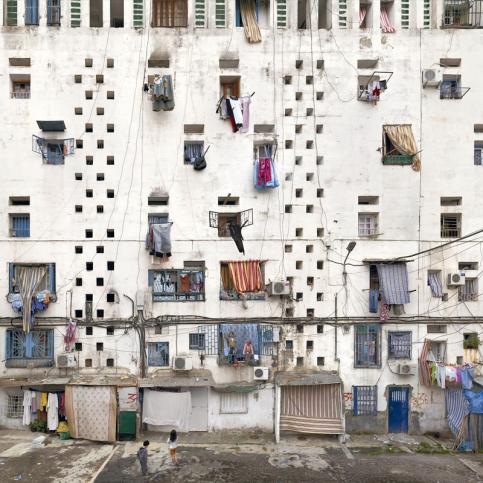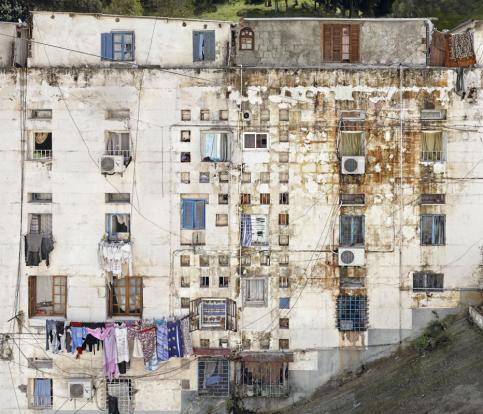Stéphane Couturier examines urban development and the metamorphosis of buildings. With elegance, the photographer manages to reveal the “guts of the city”; his photos, whether they are taken in Paris, Berlin, Havana or Seoul, are the result of the inextricable overlapping of a hyper-realistic rendering and the dissolution of form. His project “Climat de France” (French climate) came to be in 2011 and is based around Fernand Pouillon, a figure of fifties architecture who was one of the biggest builders in the reconstruction that occurred after the Second World War. Using photography and video, Stéphane Couturier dissects Algiers’ biggest group of tower blocks, built during the Algerian war, the location of much confrontation between the GIA (Armed Islamic Group) and the authorities and now a hotbed for all types of trafficking.
The city is a collection of sequences, of course, but it remains a block. Building by building, neighbourhood by neighbourhood, portrait by portrait, Alger seems indivisible. The fragments correspond perfectly to the idea of the city. We know, we’ve said it often enough, the idea and the object cannot coincide. Nevertheless, here, Stéphane Couturier comes close to the “truth”. He does not convoke our senses but he makes us see the matter. By systematically depicting images in series, he detaches himself from a solely ‘matièrist’ depiction. His photography aims to give an account of this event through the infinite number of circumstances that accompany it.
The photographer provides us with glimpses of the living, but does so not by convoking chance. The idea of the fragmented band joins them, or, connects them to a form of thought that gives them meaning. The precise representation of the properties of that which is exposed incites the viewer to comment. The photographic method is implacable.
Is truth, then, not to be found in the precision of these lines? The knowledge of things is nevertheless inseparable from these suspended objects, running along interminable facades. That which is fleeting, people’s everyday stories, make light of the monument and its essence. Time is the main issue in this photography; each image comes with its own layers of history. Long term time is depicted beside ever-changing current events. Sheets and clothes dry and satellite dishes signal modernity. Out of time and in the moment, photography proves that nothing comes before anything else.
[…]
We see how Stéphane Couturier constitutes his photographic universe. As a viewer, believing we are contemplating extensive documentation on architecture or simply compiling an insensitive inventory, we contemplate our own relationship with order and disorder. All of these images, with their subtly repetitive construction, echo our anxieties and our desires. Photography, in olden times, liked to define good and evil. Here, the approach is more like describing the imperative of things and its antidote, the fluid. In these photographs, we never come up against the solid. Life is avoidance and withdrawal.
François Cheval

Climat de France, « an architecture without disdain »
Fernand Pouillon was an architect of Mediterranean sensibilities known for his designs of high-quality, low-cost housing developments with a great many units. The mayor of Algiers commissioned him in the nineteen-fifties to design three such projects, including the Climat de France complex. These developments were built for the purpose of relocating the Muslim population that was living in cramp conditions in shantytowns, thereby contributing to reducing social tensions and reasserting the authority of Metropolitan France.
Overlooking the working class district of Bab el-Oued and the old city, and facing the sea, Climat de France was the biggest of these developments, offering nearly 5,000 housing units. (…) The main building is structured around a rectangular plaza, 233 x 38 meters long. White stone columns line the interior building fronts, giving them a classical look. Pouillon wrote:” I’m sure that this architecture is without disdain. Maybe for the first time in the modern era we have settled people in a monument. And these people who were the poorest of poor Algeria understood this. They were the ones who named it “the 200 Columns”.
Today, Climat de France is an overpopulated housing development, some of which is dilapidated and unfit for habitation. The cellars have been converted into rooms and the rooftop of the 200 Columns building – initially designed specifically with the housework and social life of the women in mind – has been turned into a shantytown. The plaza has been dubbed La Colombie (Columbia) for all the trafficking and dealing that goes on there and the police don’t enter the project anymore. But the stone architecture has nonetheless withstood these overpopulated conditions much better than concrete would have done.
Etienne Hatt
Journalist, on the editorial staff of artpress

Publication :
Stéphane Couturier
Alger – Climat de France
Texts / François Cheval, Etienne Hatt
Editor : Arnaud Bizalion
Marseille, 2014
23x32 cm
76 page
ISBN : 978-2-36980-023-1
30€
Stéphane Couturier
Texts François Cheval, Matthieu Poirier
Editor : Xavier Barral
Paris, 2016
24x30 cm
308 page
ISBN : 978-2-36511-111-9
39€






